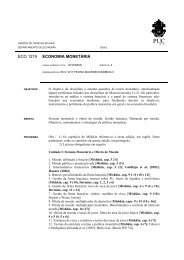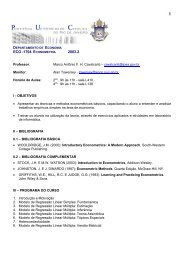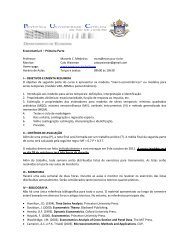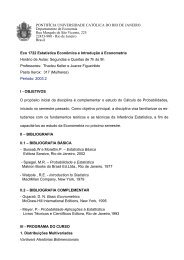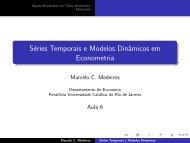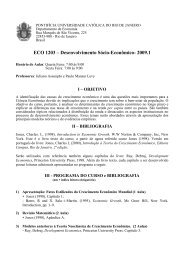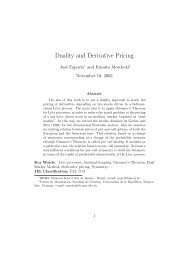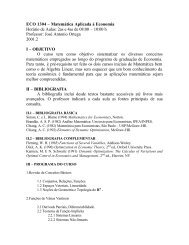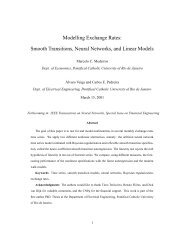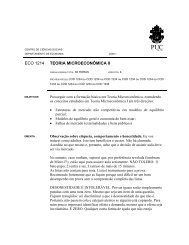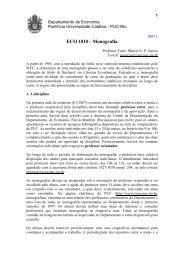Dynamic Hedging with Stochastic Differential Utility
Dynamic Hedging with Stochastic Differential Utility
Dynamic Hedging with Stochastic Differential Utility
You also want an ePaper? Increase the reach of your titles
YUMPU automatically turns print PDFs into web optimized ePapers that Google loves.
stated. When well defined, the utility process, J, for a given consumptionprocess, c, is the unique Ito process J having a stochastic differential representationof the formdJ(z t )=·−f(c t ,J(z t )) − 1 2 k(J)J 0 z tΣJ zt¸dt + J 0 z tΛ (z t ) dB t ,where the subscript of J indicates derivative <strong>with</strong> respect to the argument.In this framework the pair (f,k) is called ”aggregator”, that determinesthe consumption process, c, such that the utility process, J, is the uniquesolution toJ(z t )=E t·Zs≥t½f [c s ,J(z s )] + 1 ¾ ¸2 k(J)J z 0 sΣJ zs ds ,t≥ 0.We think of J(z t ) as the continuation utility of c at time t, conditional oncurrent information; and k(J) as the variance multiplier, applying a penalty(or reward) as a multiple of the utility ”volatility” J 0 zΣJ z . In a discrete timesetting, we could say that at time t, the intertemporal utility J (·,t+1)fortheperiodaheadandbeyondisarandomvariable.Thusfirst the agentcomputes the certainty equivalent, m (∼ J (·,t+1)|= t ), of the conditionaldistribution ∼ J (·,t+1)|= t of J (·,t+ 1), given information = t at time t.Then (s)he combines the latter <strong>with</strong> c t via the aggregator. The function fencodes the intertemporal substitutability of consumption and other aspectsof ”certainty preferences”, also generating a collateral risk attitude underuncertainty. The certainty equivalent function, m, encodes the risk aversionin the sense described in Epstein and Zin (1989).36



